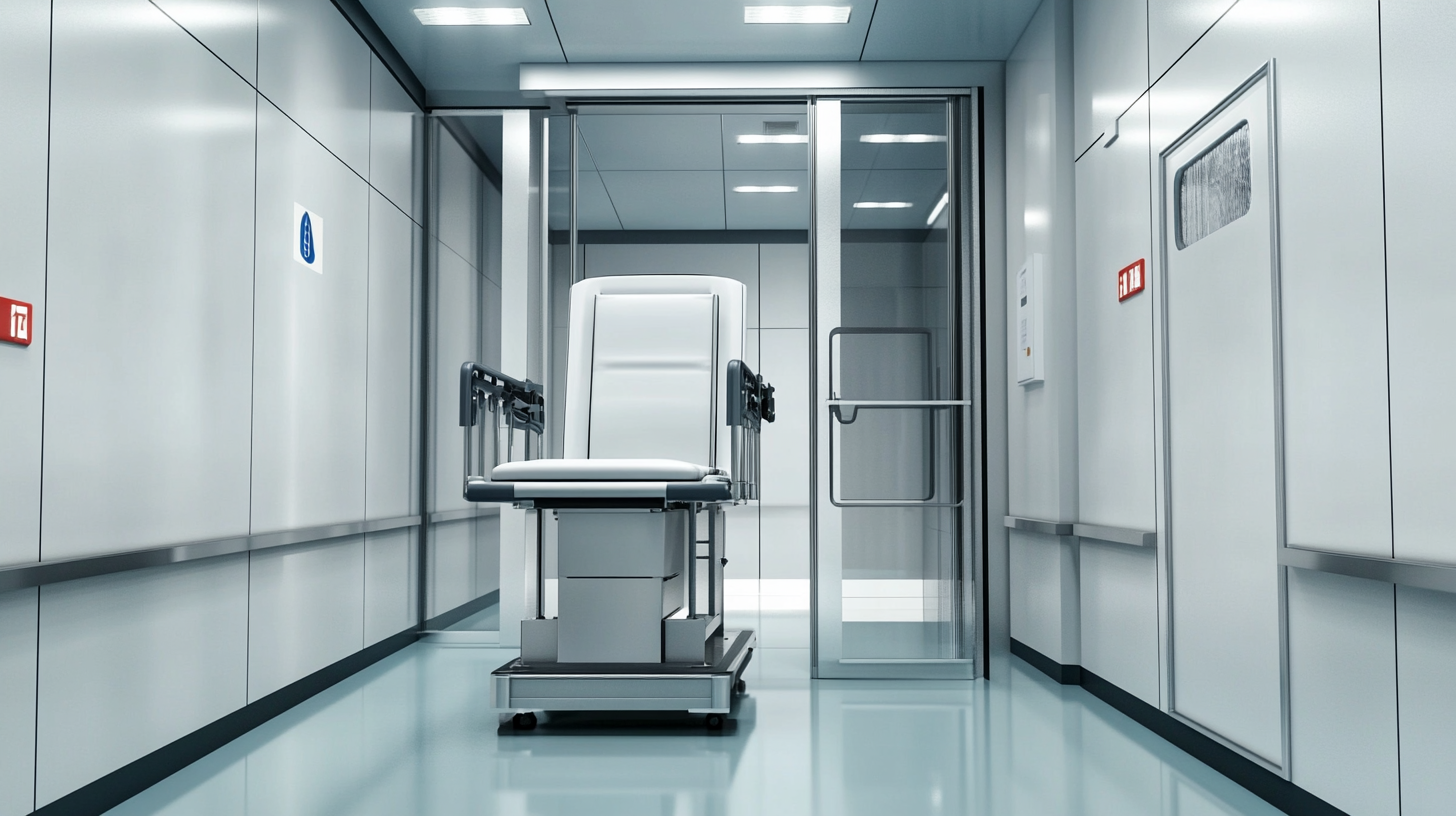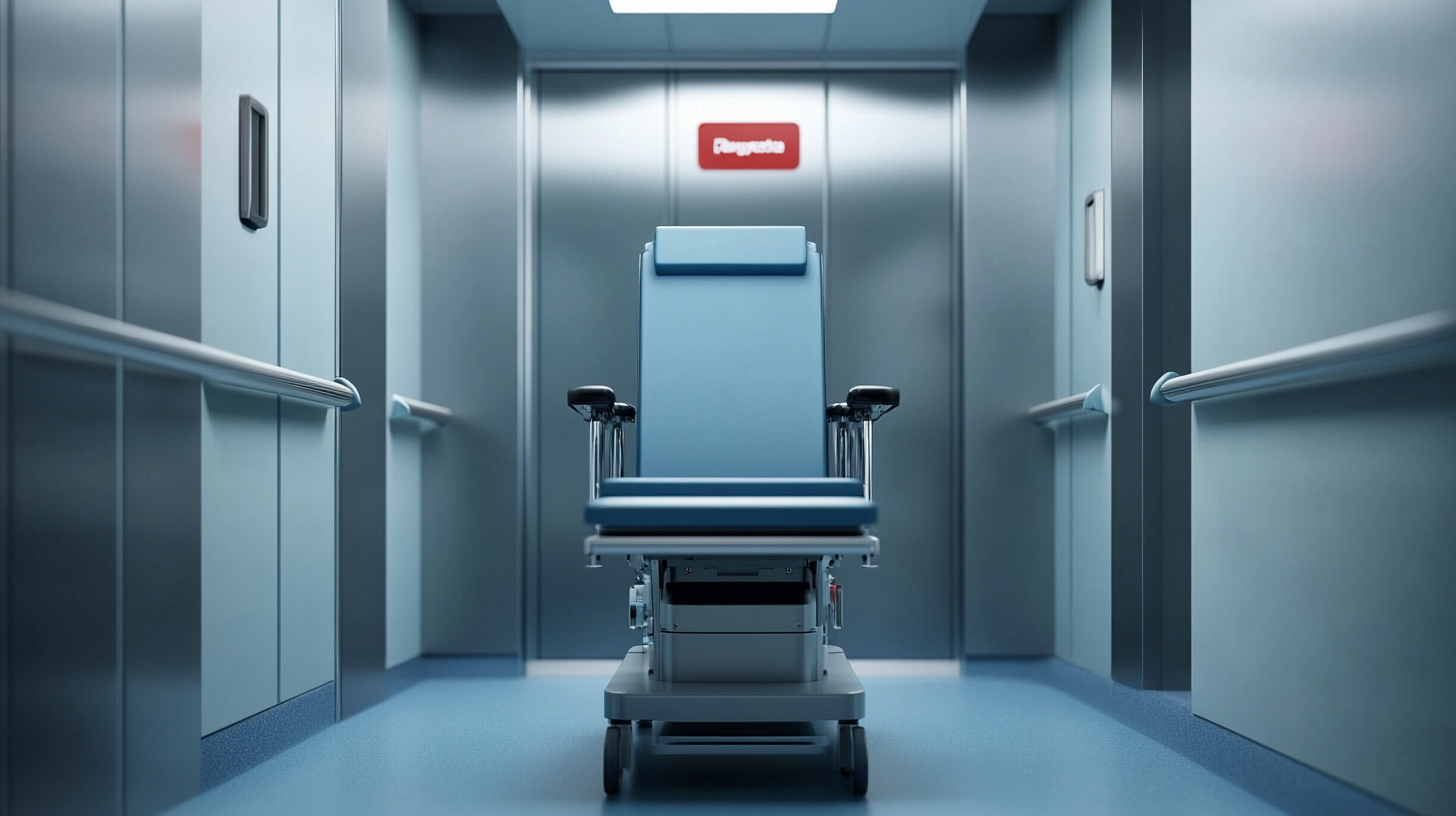How to Navigate Import Export Certifications for the Best Patient Lift Solutions
Navigating the complexities of import-export certifications is essential for ensuring the best patient lift solutions in today's healthcare landscape. With the global market for patient lift equipment expected to reach USD 1.5 billion by 2026, according to a recent industry report, understanding regulatory requirements and certification processes has never been more critical.

China, renowned for its manufacturing excellence and export prowess, stands as a leader in producing high-quality patient lifts that meet international standards. The country possesses a formidable competitive edge, with over 30% of the global share in medical equipment exports, including advanced patient lifting solutions. As healthcare facilities increasingly prioritize patient safety and comfort, navigating the certification landscape becomes a vital endeavor for importers seeking top-tier patient lifts that enhance the quality of care.
Understanding Import Export Certifications in the Medical Equipment Industry
Navigating the complexities of import and export certifications in the medical equipment industry is crucial for businesses looking to provide the best patient lift solutions. These certifications serve not only to ensure regulatory compliance but also to reassure healthcare providers and patients about the safety and efficacy of the equipment. Understanding the specific requirements of each market is vital, as different countries have varying standards and certification processes that must be adhered to.
For manufacturers and distributors, staying informed about the latest regulations and certifications is essential. For example, in the United States, the Food and Drug Administration (FDA) oversees the certification process for medical devices. In contrast, Europe has the Medical Device Regulation (MDR) that sets stringent standards for safety. Engaging with relevant authorities and seeking guidance from industry experts can significantly streamline the certification process, ultimately facilitating smoother market entry for innovative patient lift solutions. By prioritizing compliance with these regulations, companies can enhance their reputation and expand their market reach effectively.
How to Navigate Import Export Certifications for the Best Patient Lift Solutions
| Certification Name | Issuing Authority | Region | Requirements | Timeframe for Approval | Cost Estimation |
|---|---|---|---|---|---|
| FDA 510(k) | Food and Drug Administration | United States | Pre-market notification, device classification | 90-180 days | $5,000 - $20,000 |
| CE Marking | European Commission | European Economic Area | Conformity to health, safety, and environmental protection standards | 2-6 months | $10,000 - $50,000 |
| ISO 13485 | International Organization for Standardization | Global | Quality Management System for medical devices | 6-12 months | $15,000 - $30,000 |
| TGA Approval | Therapeutic Goods Administration | Australia | Medical device safety and efficacy evaluation | 1-4 months | $7,000 - $25,000 |
| MDSAP Certification | Various National Authorities | Global | Quality Management System across multiple jurisdictions | 12-18 months | $25,000 - $100,000 |
Key Regulatory Bodies and Their Roles in Patient Lift Certifications
Navigating the intricate landscape of import-export certifications for patient lift solutions requires a clear understanding of the key regulatory bodies involved. In the United States, the Food and Drug Administration (FDA) plays a pivotal role in ensuring that medical devices, including patient lifts, meet rigorous safety and effectiveness standards. According to the FDA, over 83% of medical device recalls in recent years were attributed to manufacturing defects, highlighting the importance of compliance with certification processes. Manufacturers must obtain 510(k) premarket notification, demonstrating that their device is substantially equivalent to an already marketed one, thereby ensuring safety for end-users.
Additionally, in Europe, patient lift solutions are subject to strict regulations under the Medical Device Regulation (MDR). The European Medicines Agency (EMA) oversees these certifications and mandates that devices undergo thorough clinical evaluations. Research indicates that approximately 50% of medical device companies face challenges in meeting these regulatory demands, often leading to delays in market entry. Understanding the roles of these regulatory bodies is crucial for manufacturers seeking to navigate the certification process effectively while ensuring the delivery of safe and reliable patient lift solutions to healthcare facilities around the world.
Navigating Compliance: Essential Documentation for Importing Medical Devices
 When importing medical devices like patient lifts, understanding compliance is crucial to ensure safety and efficacy in healthcare settings. The essential documentation needed for importing these devices often includes a valid FDA registration, quality system certifications, and specific import licenses. Importers must familiarize themselves with the regulatory landscape, which can vary significantly based on the device class and intended use. This means working closely with manufacturers to gather all necessary documents, including CE marking for the European market or other region-specific certifications that validate the device's compliance with safety standards.
When importing medical devices like patient lifts, understanding compliance is crucial to ensure safety and efficacy in healthcare settings. The essential documentation needed for importing these devices often includes a valid FDA registration, quality system certifications, and specific import licenses. Importers must familiarize themselves with the regulatory landscape, which can vary significantly based on the device class and intended use. This means working closely with manufacturers to gather all necessary documents, including CE marking for the European market or other region-specific certifications that validate the device's compliance with safety standards.
Another critical aspect of navigating compliance involves ensuring that all documentation is up-to-date and comprehensible during the customs process. Importers should keep track of any changes in regulations or additional requirements that may arise from health authorities. Failure to present the correct paperwork can lead to delays, added costs, or even the rejection of imports. Thus, establishing strong communication channels with regulatory agencies and staying informed about compliance guidelines is vital for a smooth import process of patient lift solutions. This diligence not only safeguards the integrity of the device but also protects the patients who rely on them for care.
Market Trends: Growth of Patient Lift Solutions and Import/Export Implications
The patient lift solutions market is experiencing significant growth, reflecting broader trends in healthcare and rehabilitation technologies. According to recent studies, the global market for patient lift solutions is projected to rise substantially, driven by an increasing aging population and a higher prevalence of chronic diseases. As healthcare facilities strive for improved patient safety and enhanced operational efficiency, the demand for advanced patient lifts is expected to surge. This trend has implications for import and export activities, as manufacturers navigate various certifications to ensure regulatory compliance while meeting international market demands.

Simultaneously, the A3 and A4 printing kiosk market is witnessing an evolution influenced by the COVID-19 pandemic. The report highlights a shift towards laser and thermal printers, catering to diverse applications across sectors such as education, government, and healthcare. The pandemic has expedited the need for contactless and efficient printing solutions, propelling the market size to a projected 55 billion USD by 2024, with a notable compound annual growth rate of 6.6% from 2025 to 2034. These parallel developments in healthcare solutions and supportive technologies underscore the intricate interdependencies between product innovation, market demands, and regulatory landscapes in the global trade arena.
Case Studies: Success Stories of Compliant Patient Lift Importers and Exporters
When exploring compliance in the import and export of patient lift solutions, case studies of successful companies serve as valuable learning tools. For instance, a company that established a strong partnership with regulatory agencies not only streamlined its certification process but also enhanced its market reputation. By working closely with authorities, they navigated the often convoluted certification requirements and avoided costly delays, ultimately leading to increased customer trust and higher sales.
Tip: Communication is key. Engaging with regulatory agencies from the beginning can prevent misunderstandings and ensure that all requirements are met in a timely manner.
Another noteworthy success story involves a firm that embraced technology by implementing an efficient tracking system for their compliance documents. This allowed them to maintain an organized database of certifications, inspection reports, and shipping credentials. As a result, they were able to respond quickly to regulatory inquiries, which reinforced their industry standing.
Tip: Invest in digital tools that help you track and manage your compliance documents; staying organized can make a significant difference in meeting import export demands.
